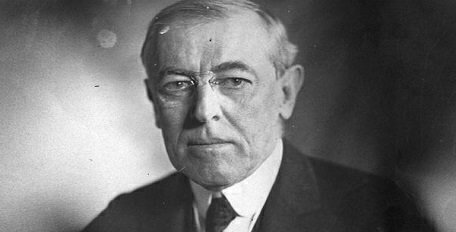One of the broadest acts of presidential power happened on this day in 1917, when President Woodrow Wilson issued an order for the federal government to nationalize the entire railroad system during World War I.
For several years, Congress and the Wilson administration had tried to intervene in the railroad industry’s economic struggles. By 1916, there were critical problems with the railroad system. The empowerment of the Interstate Commerce Commission (ICC) a decade earlier to control shipping rates came about with passage of the Hepburn Rate Act of 1906.
President Theodore Roosevelt championed the Hepburn Act, which gave the ICC power to regulate “fair, just and reasonable” passenger and shipping rates charged by the railroads. Roosevelt succeeded despite heavy opposition from railroad interests, but the rate caps later came back to make some railroad systems unprofitable through the next decade, forcing them into receivership.
The railroad industry also saw the threat of a strike in 1916 as workers sought better conditions. Congress sought to head off the strike with the passage of the Adamson Act, which gave some unionized railway workers a standard eight-hour work day.
However, railroad owners balked at honoring the eight-hour work day. The issue made it to the Supreme Court, where Chief Justice Edward White wrote in Wilson v. New that a lower court erred in ruling the act unconstitutional, because Congress had “a power which inevitably resulted from its authority to protect interstate commerce.”
At the same time, Congress passed the Army Appropriations Act of 1916, which granted the president the power to take over the nation’s transportation systems, if needed during wartime conditions.
The railroad system faltered under the heavy demands of a wartime economy in 1917, resulting in materials being unable to be loaded and shipped on trains. On December 26, 1917, President Wilson issued a declaration that he had nationalized the railroad system, and he ordered Secretary of War Newton Baker to take possession of the railroads on December 28, 1917. Wilson appointed his son-in-law, Treasury Secretary William McAdoo, as administrator for the United States Railroad Administration.
During 1918, Congress passed an act that guaranteed that the railroad system would return to private control within 21 months of a peace treaty signed by the United States.
The railways remained under federal control not only for the remainder of World War I but until 1920. The federal government made considerable efforts to consolidate and streamline services under its legal monopoly. More than 100,000 railroad cars were built using standardized designs and an estimated $1 billion was invested in transportation systems.
Congress then needed to change the conditions that reverted control of the railroads back to the private sector, since the Senate didn’t ratify a peace treaty after World War I. The Transportation Act of 1920 (also known as the Esch-Cummins Act) returned the railroad system to its private owners, but it expanded the powers of the ICC and established collective bargaining systems.








